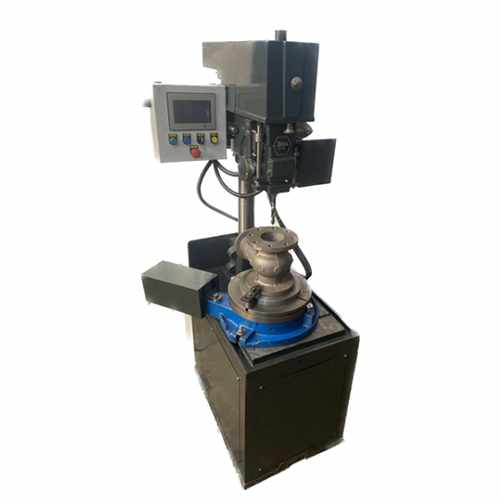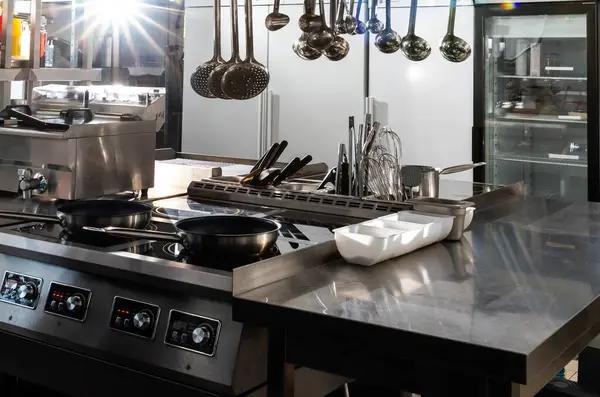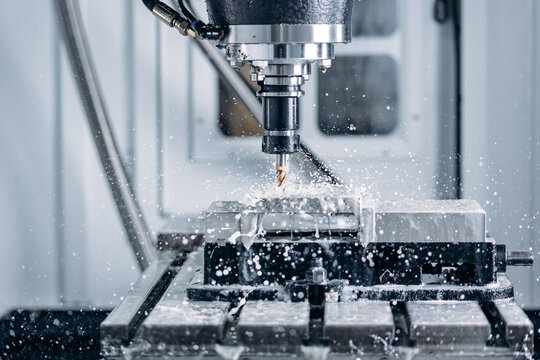
Introduction
Norway CNC Drilling Machine Market with its strong engineering heritage and growing participation in international aerospace programs, is witnessing a significant shift in material usage. Advanced composites, lauded for their exceptional strength-to-weight ratio, corrosion resistance, and design flexibility, are increasingly replacing traditional metallic alloys in aircraft construction. This material revolution is profoundly impacting the demands placed on CNC (Computer Numerical Control) drilling machines and the strategies employed within Norway's aerospace manufacturing sector.
This article delves into the intricate relationship between the rising adoption of advanced composites and the evolving requirements for CNC drilling operations in Norway's aerospace industry. We will explore the unique challenges posed by these materials, the innovative drilling technologies and strategies being implemented, and the key players adapting to this transformative landscape.
The Material Shift: Why Composites are Crucial for Norway's Aerospace Future
The aerospace industry globally is embracing advanced composites like Carbon Fiber Reinforced Polymers (CFRP), Glass Fiber Reinforced Polymers (GFRP), and hybrid materials for various aircraft components, ranging from fuselage and wings to interior structures. Several compelling reasons underpin this transition:
Weight Reduction: Composites offer significantly lower density compared to aluminum and steel, leading to lighter aircraft. This translates directly into improved fuel efficiency, reduced emissions, and enhanced payload capacity – critical factors for airlines and environmental sustainability.
Enhanced Strength and Stiffness: Despite being lighter, composites can be engineered to possess comparable or even superior strength and stiffness compared to metals, allowing for the design of more aerodynamically efficient and structurally robust aircraft.
Superior Fatigue and Corrosion Resistance: Unlike metals that are susceptible to fatigue cracking and corrosion, composites exhibit excellent resistance to these degradation mechanisms. This leads to longer service life, reduced maintenance costs, and improved safety.
Design Flexibility: Composites can be molded into complex shapes with fewer joints and fasteners, streamlining manufacturing processes and improving aerodynamic performance.
Improved Radar Absorbency: Certain composite materials offer stealth capabilities, making them crucial for military applications.
For Norway's aerospace sector, which includes companies involved in aircraft manufacturing, component supply, and maintenance, repair, and overhaul (MRO) services, embracing composites is essential for staying competitive in the global market and participating in cutting-edge aerospace projects.
The Drilling Dilemma: Unique Challenges of Machining Advanced Composites
While offering numerous advantages, advanced composites present a unique set of challenges when it comes to machining, particularly drilling. Unlike homogenous metallic materials, composites are anisotropic (properties vary with direction) and have a complex layered structure. This heterogeneity leads to several drilling issues:
Delamination: This is perhaps the most significant challenge. The layered structure of composites can separate during drilling due to thrust forces and cutting action, leading to structural weakness and rejection of the component.
Fiber Pull-out: As the drill penetrates the material, fibers can be pulled out instead of being cleanly cut, resulting in a rough surface finish and compromised hole quality.
Fuzzing and Burring: At the entry and exit points of the drill, loose fibers (fuzzing) and material protrusions (burring) can occur, requiring secondary finishing operations.
Thermal Damage: Composites have low thermal conductivity, meaning heat generated during drilling can accumulate, leading to resin degradation, fiber burning, and micro-cracking.
Tool Wear: The abrasive nature of reinforcing fibers, especially carbon fibers, causes rapid wear on conventional drill bits, leading to increased tooling costs and inconsistent hole quality.
Chip Evacuation: The swarf produced from composite drilling can be fibrous and difficult to evacuate, potentially clogging the drill flutes and hindering the cutting process.
Evolving CNC Drilling Requirements: Precision and Innovation Take Center Stage
To overcome these challenges and effectively machine advanced composites, the requirements for CNC drilling machines and processes in Norway's aerospace sector are evolving significantly. Key demands include:
High Precision and Accuracy: Aerospace applications demand extremely tight tolerances for drilled holes to ensure proper assembly and structural integrity. CNC machines must offer exceptional positional accuracy and repeatability.
Optimized Cutting Parameters: Determining the ideal feed rates, spindle speeds, and depth of cut is crucial for minimizing drilling defects. CNC controls need to offer precise control over these parameters and allow for material-specific programming.
Specialized Tooling: Standard metal drilling tools are often inadequate for composites. The industry is witnessing the development and adoption of specialized drill bit geometries made from materials like polycrystalline diamond (PCD) or coated carbides, designed to shear fibers cleanly and minimize delamination. Examples include compression drills, double-angle drills, and step drills.
Advanced Clamping and Fixturing: Secure and appropriate clamping is essential to prevent vibration and movement of the composite workpiece during drilling, which can exacerbate delamination. Vacuum fixtures and specialized clamping mechanisms are becoming increasingly important.
Effective Coolant and Chip Evacuation Systems: Efficient removal of heat and swarf is critical. CNC machines need to be equipped with optimized coolant delivery systems and chip extraction mechanisms to prevent thermal damage and clogging.
Real-time Monitoring and Control: Integrating sensors and monitoring systems into CNC machines allows for real-time feedback on drilling forces, temperature, and vibration. This data can be used to adjust cutting parameters dynamically and detect potential issues before they lead to defects.
Multi-axis Machining Capabilities: The complex geometries of many aerospace composite components necessitate the use of multi-axis CNC machines (typically 5-axis) to access drilling locations from various angles without repositioning the part, improving efficiency and accuracy.
Automation and Robotics: To increase productivity and consistency, automated drilling cells incorporating robots for part loading/unloading and machine operation are becoming more prevalent.
Simulation and Optimization Software: Before actual machining, simulation software is used to model the drilling process, predict potential defects, and optimize cutting parameters for specific composite materials and tool geometries.
Innovations in CNC Drilling Technologies for Composites
To meet these evolving requirements, significant innovations are emerging in CNC drilling technologies for advanced composites:
Ultrasonic Assisted Drilling (UAD): This technique superimposes high-frequency vibrations onto the drill bit, reducing cutting forces, improving chip evacuation, and minimizing delamination.
Orbital Drilling: Instead of a conventional rotating motion, the drill bit follows a small orbital path, reducing thrust forces and improving hole quality, particularly at the exit.
Laser Assisted Drilling (LAD): A laser beam heats the composite material ahead of the drill bit, softening the resin matrix and reducing cutting forces. This can lead to cleaner cuts and reduced tool wear.
Waterjet Assisted Drilling: A high-pressure water jet can be used in conjunction with or as an alternative to conventional drilling to create holes in composites with minimal heat generation and dust.
Cryogenic Machining: Cooling the work piece and the cutting tool to extremely low temperatures can improve the mach inability of composites by increasing their stiffness and reducing thermal damage.
Smart Tooling: Drill bits equipped with embedded sensors can provide real-time data on cutting forces, temperature, and wear, allowing for process optimization and predictive maintenance.
Key Players Adapting to the Composite Challenge in Norway
While specific details about individual companies' strategies in Norway are proprietary, we can identify the types of players and their likely approaches:
Aerospace Manufacturers and Tier 1 Suppliers: These companies are directly investing in advanced CNC drilling machines equipped with the features necessary for machining composites. They are also likely involved in research and development to optimize drilling processes for specific composite materials used in their products. Collaboration with machine tool builders and tooling manufacturers is crucial.
CNC Machine Tool Builders: Global leaders in CNC machine tool manufacturing are developing and offering specialized machines tailored for composite machining. These machines incorporate features like high-speed spindles, advanced control systems, vibration damping, and optimized coolant and chip evacuation systems. They are likely working closely with aerospace companies in Norway to understand their specific needs.
Cutting Tool Manufacturers: Companies specializing in cutting tool technology are at the forefront of developing innovative drill bit designs and materials optimized for composite drilling. This includes PCD tools, coated carbide tools with specialized geometries, and tools designed to minimize delamination and fiber pull-out. They are actively engaging with the Norwegian aerospace sector to provide effective tooling solutions.
Research Institutions and Universities: Norwegian research institutions and universities play a vital role in advancing the understanding of composite machining and developing new drilling techniques and methodologies. They often collaborate with industry partners to address specific challenges and drive innovation.
MRO Service Providers: As composite aircraft enter service, the demand for MRO services capable of handling composite repairs, including drilling for fastener replacement, is growing. These providers are investing in specialized tooling and training to address these needs.
The Future Landscape: Continued Innovation and Collaboration
The impact of advanced composites on CNC drilling requirements in Norway's aerospace sector will only intensify in the coming years. As the adoption of composites continues to grow, we can expect:
Further advancements in CNC machine tool technology specifically tailored for composites.
Development of even more sophisticated cutting tool materials and geometries.
Increased integration of automation and robotics in composite drilling processes.
Greater emphasis on real-time monitoring and data-driven optimization of drilling parameters.
Stronger collaboration between material suppliers, machine tool builders, tooling manufacturers, and end-users to address the unique challenges of composite machining.
Growing importance of training and education for operators and engineers in the nuances of composite drilling.
Conclusion
The integration of advanced composites into Norway's aerospace sector presents both significant opportunities and complex challenges for CNC drilling operations. By embracing innovation in machine tool technology, cutting tools, and machining strategies, and fostering collaboration across the industry, Norway can effectively navigate this material revolution. The ability to precisely and efficiently drill these advanced materials will be a critical factor in maintaining competitiveness, ensuring the quality and safety of aerospace components, and solidifying Norway's position in the global aerospace landscape. The ongoing advancements in CNC drilling are not just about creating holes; they are about enabling the future of flight.










Write a comment ...